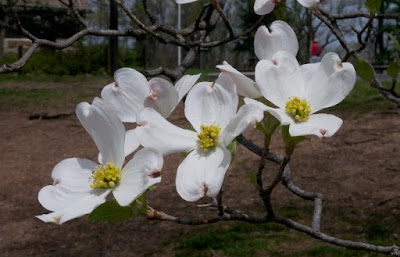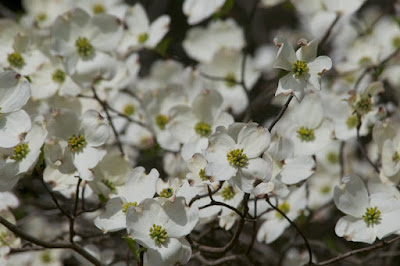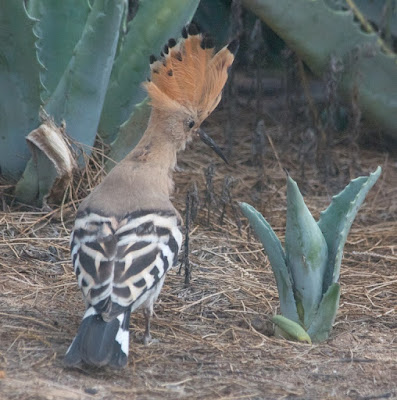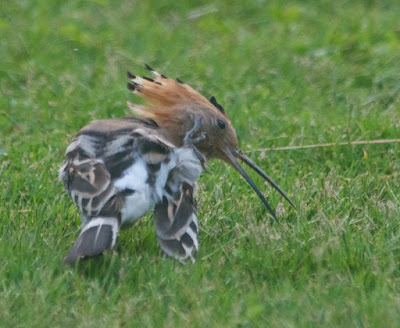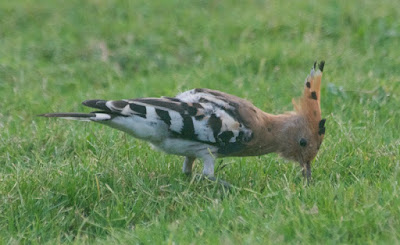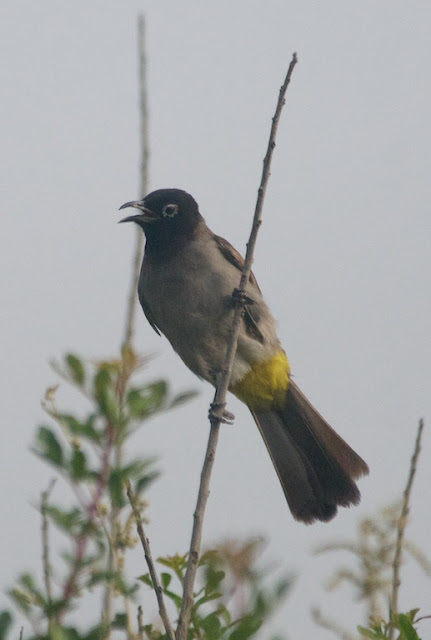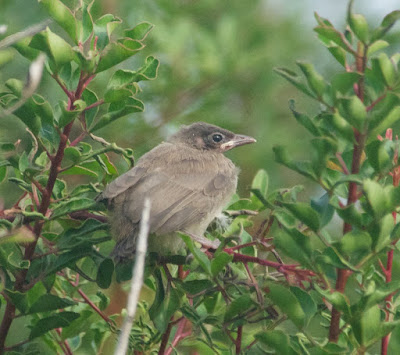There is more than one way to get from Ontario to Florida. I selected a route through country that was new to me, passing through nine states (including Florida) including two, North and South Carolina, that I had never visited before. As the only naturalist in the group, I was under no illusions that I would get much nature-watching in, but there were nonetheless odd moments en route to remind me that spring was unfolding and migrating birds were streaming past us. This entry is hardly the equivalent of Edwin Way Teale’s classic North with the Spring, but it should provide, at least, a taste of the season.
Our first day (April 24, 2016) was mostly involved in getting from here to there - ‘there’, in this case, being a roadside hotel in Altoona, Pennsylvania. The next day was altogether more interesting. We were headed for my cousin Joe Greenberg’s house in Charlottesville, Virginia, but instead of going there directly we took a decidedly scenic route: the famous Skyline Drive through Shenandoah National Park.
The park protects the forests (logged over in the past, but still impressive) of the Blue Ridge (not to be confused with the Blue Ridge Mountains of Tennessee), the easternmost of the three highland spurs that form the northern extension of the Appalachian Mountains. The Skyline Drive, built by Franklin D. Roosevelt’s Citizen Conservation Corps during the Great Depression, traverses the ridge top for 103 miles. We were unable to drive the whole of it - the southern portion had been closed after a forest fire swept through 8000 hectares of the park during the previous week.
Climbing and, later, descending from the ridge top gave us an object lesson in climatic succession. There is an ecological rule of thumb that says that every thousand feet of a North American mountain range you climb is equivalent to a hundred-mile journey to the north. So it was here. On our previous day’s drive south from Canada we had watched as the still largely leafless woodlands of Ontario gradually gave way to more and more fully leafed-out trees.
As we climbed the Skyline Drive, the situation rapidly reversed itself. When we reached the top - between about 2600 and 3200 feet above sea level - we found ourselves back among trees that had only begun to wake from dormancy.
We were not, though, back in Ontario. Carolinian plants, rare at home, had begun to assert themselves - Eastern Redbud (Cercis canadensis), which grows poorly in most of Ontario despite its name, and Flowering Dogwood (Cornus florida).
Around the Visitor’s Center the dogwoods were being visited by Eastern Tiger Swallowtails (Papilio [Pterourous] glaucus) and a single Zebra Swallowtail (Protographium marcellus), a butterfly I had never seen before, but the butterflies evaded my camera.
A number of the trees were decorated with the webs of Eastern Tent Caterpillars (Malacosoma americanum). My late professor J. Murray Speirs always referred to these objects as 'cuckoo food', and indeed North American cuckoos are among the few birds that will eat the caterpillars inside.
As we followed the drive we were treated to views of the fabled Shenandoah Valley far below us, still - as it has been for almost two centuries - dotted with farms.
At one overlook, an Eastern Towhee (Pipilo erythrophthalmus) sang from atop a patch of shrubbery that he clearly regarded as his.
By the time we reached Charlottesville, where we were welcomed by Joe and his wife Sharon, we were truly back in the Carolinian Zone.
Joe and Sharon’s home backs on an attractive patch of woodland inhabited by White-tailed Deer (Odocoelius virginianus) and even the occasional wandering Black Bear (Ursus americanus). We didn’t see any, of course, but we were treated to the songs of a Tufted Titmouse (Baeolophus bicolor), common here but a rare bird in Canada.
Just off Joe’s back porch I could see a number of American Tuliptrees (Liriodendron tulipifera), true symbols of the Carolinian Forest. The interested reader can compare these leaves to those of the only other tuliptree in the world, the Chinese Tuliptree (L. chinense), which I photographed at the foot of Mount Huangshan back in 2010.
The highlight of our visit to Charlottesville was a fascinating look into the mind and home of one of America’s greatest pioneer scientists. Some 460,000 visitors have the same experience every year. I refer, of course, to Thomas Jefferson (1743-1826) and his famous hilltop house at Monticello (the name means ‘little mountain’ in Italian).
Of course most people think of Jefferson as the third president of the United States (or, perhaps, as an unrepentant slave-owner), but Jefferson refused even to allow that honour to be engraved on his tombstone. Instead, he insisted on listing what he considered his three principal accomplishments: writing the Declaration of Independence and the Statute of Virginia for Religious Freedom, and founding the University of Virginia.
Unfortunately you are not allowed to take photographs inside the house itself, or I would show you evidence of Jefferson’s scientific bent: bones of the American Mastodon (Mammut americanum) he famously described, on view in the entrance hall with, among other things, antlers of the various species of American deer (plus the horns of a Pronghorn (Antilocapra americana) thrown in for good measure), a copy of Linnaeus’ Systema Naturae on his bookshelf (not his personal copy, but he did own one), and a small engraved portrait of the great German naturalist Alexander von Humboldt (one of Jefferson’s correspondents) on a wall.
Instead, you will have to be content with exteriors. Jefferson took forty years to build Monticello, and spent some of them in a tiny one-room building still standing on the site. Perhaps he would have enjoyed knowing that one wall of this original house is now a nesting ground for a pair of Eastern Bluebirds (Sialia sialis).
We took a tour of Jefferson’s garden, still maintained as he did (though perhaps, one supposes, without his extreme meticulousness).
Plants labelled TJ are varieties that we knew Jefferson grew.
I quite liked this parrot tulip, a type more popular in Jefferson’s day (and as any number of classic Dutch still-lifes prove, for some time earlier) than it is today. In a way, it gave us another taste of the past.










